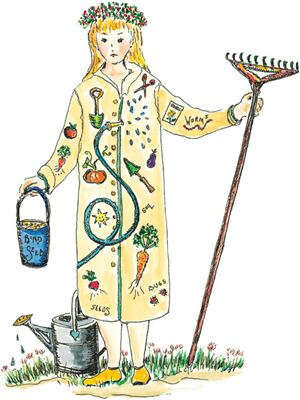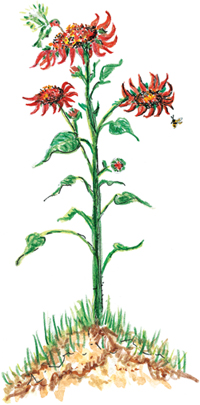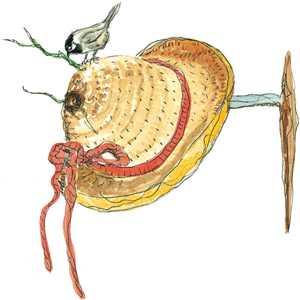

One of my greatest joys is an early-morning walk in the garden. Rain or shine, you’ll find me outdoors (usually still in my nightgown), surveying the condition of my plants. I scan the beds and container gardens in search of yellowed leaves, stunted or deformed foliage—anything out of the ordinary that points to disease or an infestation. It would be as difficult for me to overlook a sick plant as it would have been for me not to notice my son Noah’s face speckled with bright, red measles.
My friend and garden assistant Peggy tells me that of all the yards she helps tend, mine is the healthiest (although it is not necessarily the tidiest). I credit that health to a myriad of factors. First, every speck of my growing areas (even potted plants) is covered with aged compost, worm castings, finely chipped bark, or shredded leaves and pine needles.
A major part of my garden success is a result of purchasing healthy, thriving plants, bulbs, and bare root specimens. I scrutinize everything for pests, from soil to roots, stems to foliage, before introducing a new plant into my garden.
After giving my new additions a stringent health inspection, I make sure to plant them in an area that suits their needs—for example, sunflowers in full sun, camellias in dappled shade. A plant located in the right environment, with good soil and a dependable supply of water, will thrive and remain healthy.
I believe in planting a diverse array of bulbs, annuals, perennials, shrubs, and trees throughout the landscape. I think of this approach as a healthy layer cake, from the tiniest creeping thymes to the loftiest redwoods, oaks, and cedars. My well-integrated garden provides a multifaceted environment that attracts scores of beneficial inhabitants such as insects, lizards, toads, frogs, snakes, and birds. Working together, this troupe of creatures attacks, parasitizes, and consumes pest populations that might flourish and destroy a less-diversified garden.

The shelves in my potting shed will never hold ingredients bearing the suffix “-cide,” from the Latin caedo, “to kill.” Pesticides, fungicides, insecticides, herbicides, and rodenticides are composed of dangerous chemicals with fatal and far-reaching effects on the earth. Another popular pest control I avoid is Bt (Bacillus thuringiensis), a bacterium that kills most caterpillars, including beneficial butterflies and moths. Hand-picking or spraying with nontoxic potions works just fine for me, and is no more time-consuming than the application of Bt.
In the end, I believe that my morning walks (and talks) with the hundreds of plants and trees are what keep my garden healthy. Not much escapes my notice and immediate attention, and a quick response can mean the difference between the beginning of a small problem and a full-blown attack or infection.
Go outside today (pajamas permitted) and visit with your plants. Just a few minutes of this quiet time of reflection and inspection can change the way you look at and tend your garden. You will begin to discover not only problems, but also the small miracles (often overlooked) quietly unfurling, blooming, and hatching everywhere around you. Cultivate wonder in your garden, and expect the unexpected.
